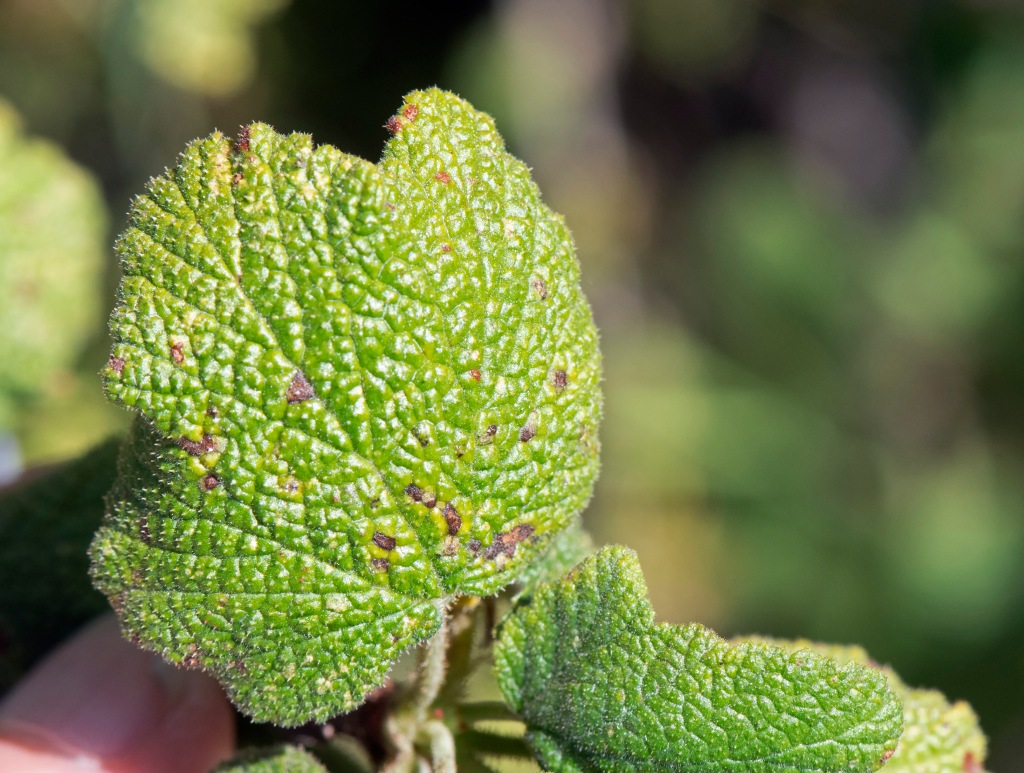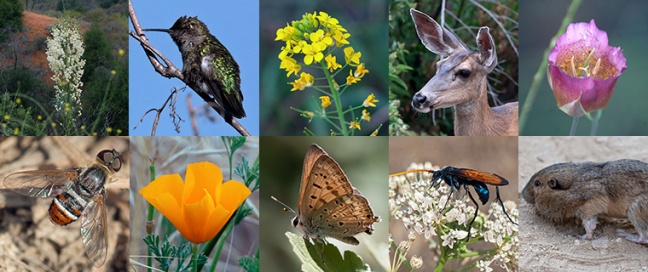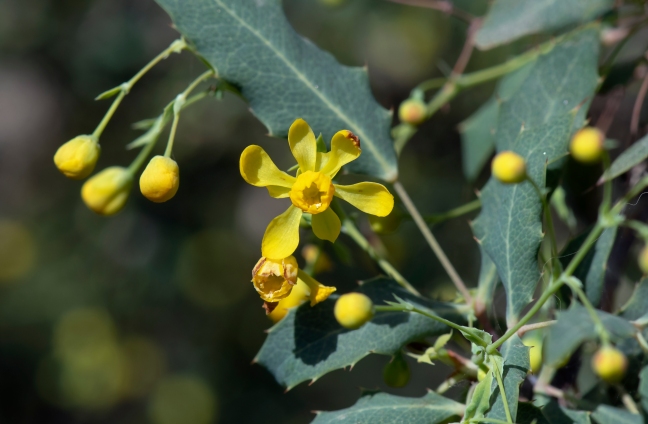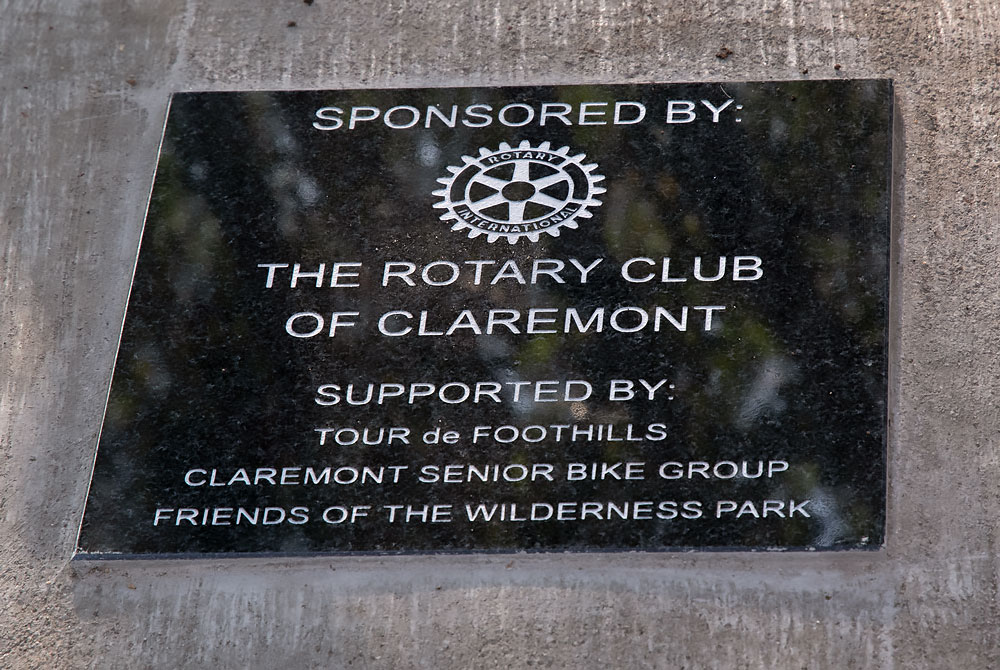The Friends’ 2019-2020 Annual Report is now available. Click here to see what we’ve been up to!
Read the Friends’ Annual Report!


The Friends’ 2019-2020 Annual Report is now available. Click here to see what we’ve been up to!

Even though it’s only February, it’s already spring in Southern California. Green leaves and shoots are popping up all over, and the earliest flowering plants are starting to bloom.
One of the first to flower is the White-flowering Currant (Ribes indecorum), which is making a show all over the Wilderness Park just now. This large deciduous shrub of chaparral and sage scrub has lobed, wrinkled bright green leaves that are slightly sticky and clusters of small white flowers in loose, dangling clusters, which are visited by bees, butterflies, and hummingbirds. The photo of the flowering plant above was taken last week in Johnson’s Pasture.
In late spring and summer, the White-flowering Currant has blue-purple berries, which are attractive to birds.



Lots more plants will be flowering soon, so keep your eyes out! If you like looking at and photographing plants and animals in the Park, please think about posting to iNaturalist. Anything you post in the Park will be collected by our Biota of the Claremont Hills Wilderness Park project.
P.S. We have no idea why the specific name is indecorum. This plant’s decorum seems fine to us!

All of you who love the biodiversity of the Claremont Hills Wilderness Park, get out your smart phones or cameras, come to Park on September 8–13, and post your photos of Park flora and fauna to iNaturalist to celebrate California Biodiversity Day 2020!
California Biodiversity Day was established in 2018 to mark the launch of the California Biodiversity Initiative. This annual event, which normally occurs on September 7, celebrates our state’s exceptional biodiversity, while also encouraging actions to protect it.
This year, however, is not quite a normal year, and events – most of them virtual – are happening from September 5 to September 13. Since the Wilderness Park is closed from September 4–7 because of excessive heat and elevated fire weather conditions, we will be celebrating in the Park from September 8–13.
As a COVID-19 precaution, group activities are currently not permitted in the Park, so the Friends will not have a tent, handouts, or helpers in the Park, like we did last year, but you are encouraged to go out on your own or with members of your household.
All observations you make on September 8–13 (even if you post them later) will be added both to the state-wide California Biodiversity Day 2020 BioBlitz and to the Biota of the Claremont Hills Wilderness Park.
If you’d like instructions and best practices for using iNaturalist, check out our post from last year.
And don’t forget to wear your mask and maintain social distancing. For more information, check out the City website.

May 15, 2020 is Endangered Species Day, and we’re highlighting Endangered Species in the Wilderness Park – Nevin’s Barberry (Berberis nevinii), which is listed as Endangered by both the State of California and US Fish & Wildlife, and Crotch’s Bumble Bee, which is a candidate for Endangered Species listing in the state of California.
Nevin’s Barberry (shown above) is an evergreen shrub with prickly leaves bearing bright yellow, sweetly scented flowers in the early spring, followed by red-orange berries. Many bees and wasps love its flowers.
Crotch’s Bumble Bee (Bombus crotchii) could be confused with the much more common Yellow-faced Bumble Bee (Bombus vosnesenskii), but it’s face is black, and the yellow stripe on the abdomen is wider and closer to the thorax.

If you are out in the Wilderness Park, and spot any rare or endangered species, please let us know by emailing info@friendsofthewildernesspark.org. If you are an iNaturalist user, please post any photos to iNaturalist, but do also email us. Because iNaturalist obscures the location, the sighting won’t appear in our Wilderness Park project (https://www.inaturalist.org/projects/biota-of-the-claremont-hills-wilderness-park).
For more information on Endangered Species Day and what you can do to help Endangered Species, see:

Thursday, December 12, saw the ribbon-cutting ceremony for a new bicycle repair station at the Wilderness Park!
Made possible by a generous donation by the Claremont Rotary Club, the bike repair station is located right next to the bike stands at the Park entrance.
The Dero Fixit repair station includes all the tools necessary to perform basic bike repairs and maintenance, from changing a flat to adjusting brakes and derailleurs. Bikes can hang from the arms of the stand, allowing the pedals and wheels to spin freely while making adjustments. Attached by strong cables to the inside of the strand are essential bike repair tools – Philips and flat head screwdrivers, Allen wrenches, box wrenches, and tire levers – are securely attached to the stand with stainless steel cables and tamper-proof fasteners. Next to the stand is an air pump so Park cyclist can keep their tires topped up and ready to roll.

Claremont Mayor Larry Schoeder presents a Certificate of Appreciation to Rotary Club President Cameron Troxell.
 Fred Cervantes, Parks & Sports Coordinator for the City of Claremont (left) stands next to the repair station with Rotarian and Park Ranger Tom Shelley, who was instrumental in obtaining the donation.
Fred Cervantes, Parks & Sports Coordinator for the City of Claremont (left) stands next to the repair station with Rotarian and Park Ranger Tom Shelley, who was instrumental in obtaining the donation.

Rotary Club President Cameron Troxell with the Certificate of Appreciation.

The Plaque on the base of the repair station.